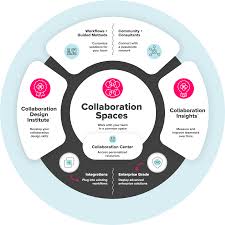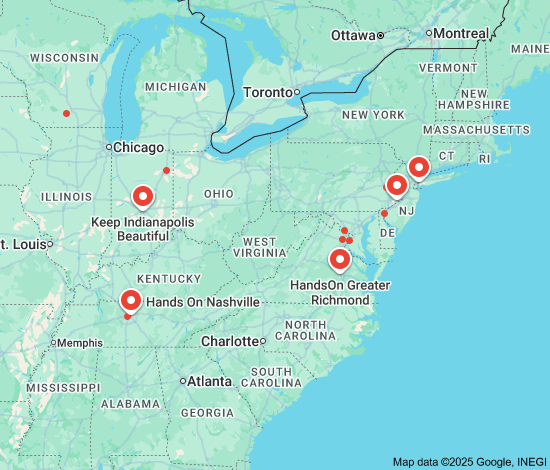The Importance of Building Healthy Communities
Building healthy communities is essential for the well-being and prosperity of society as a whole. A healthy community is one where individuals have access to resources that promote physical, mental, and social well-being. From clean air and water to safe neighborhoods and supportive social networks, a healthy community fosters a sense of belonging and empowerment among its residents.
Benefits of Healthy Communities
Healthy communities offer numerous benefits to their residents. People living in healthy communities are more likely to lead active lifestyles, have lower rates of chronic diseases, and experience higher levels of happiness and satisfaction. Additionally, healthy communities tend to have stronger economies, lower crime rates, and better educational outcomes.
Keys to Building Healthy Communities
Building a healthy community requires a collaborative effort from individuals, organizations, and policymakers. Key elements of a healthy community include:
- Access to Healthcare: Affordable healthcare services play a crucial role in promoting health and well-being within a community.
- Safe Environment: Clean air, water, and safe neighborhoods are essential for the physical health of residents.
- Social Support: Strong social networks and support systems contribute to mental health and resilience in times of need.
- Healthy Food Options: Access to nutritious food options helps prevent chronic diseases and promotes overall health.
- Economic Opportunities: Stable employment opportunities and economic development are vital for the prosperity of a community.
Community Engagement
Community engagement plays a critical role in building healthy communities. When residents actively participate in decision-making processes, advocate for positive changes, and support one another, the community thrives. Engaging with local organizations, volunteering time or resources, and participating in community events are all ways individuals can contribute to building healthier communities.
In Conclusion
In conclusion, building healthy communities is not just about physical health—it’s about creating environments where people can thrive emotionally, socially, economically, and environmentally. By working together to address healthcare disparities, promote safety and well-being, foster social connections, provide access to nutritious food options, and create economic opportunities for all residents, we can build stronger communities that benefit everyone.
5 Benefits of Building Healthy Communities: From Better Health to Safer Neighborhoods
- Improved physical health outcomes for residents
- Enhanced mental well-being and reduced stress levels
- Stronger social connections and sense of community belonging
- Increased economic opportunities and prosperity
- Safer neighborhoods and lower crime rates
Overcoming Challenges in Building Healthy Communities: Addressing Costs, Resistance, Inequality, and Resource Limitations
Improved physical health outcomes for residents
Building healthy communities leads to improved physical health outcomes for residents. By providing access to healthcare services, promoting active lifestyles, and ensuring a safe environment with clean air and water, residents in healthy communities are more likely to experience lower rates of chronic diseases, higher levels of fitness, and overall better physical well-being. When individuals have the resources and support they need to prioritize their health, the entire community benefits from a population that is healthier and more resilient.
Enhanced mental well-being and reduced stress levels
Building healthy communities leads to enhanced mental well-being and reduced stress levels among residents. When individuals have access to supportive social networks, mental health resources, and safe environments, they are better equipped to cope with life’s challenges and maintain a positive outlook. By fostering a sense of community and providing opportunities for social connection, healthy communities create spaces where individuals can find support, build resilience, and reduce feelings of isolation and stress. Prioritizing mental well-being in community planning and development not only benefits individuals but also contributes to the overall health and vitality of the community as a whole.
Stronger social connections and sense of community belonging
One significant benefit of building healthy communities is the development of stronger social connections and a sense of community belonging among residents. When individuals feel connected to their neighbors, local organizations, and the broader community, they experience a greater sense of support, inclusion, and solidarity. Strong social connections can lead to increased mental well-being, reduced feelings of isolation, and a higher quality of life. A strong sense of community belonging fosters mutual respect, empathy, and cooperation among residents, creating a more cohesive and resilient community where everyone feels valued and supported.
Increased economic opportunities and prosperity
Building healthy communities leads to increased economic opportunities and prosperity for residents. When a community prioritizes health and well-being, it creates a more attractive environment for businesses to thrive and grow. Healthy communities tend to have lower healthcare costs, higher productivity levels, and reduced absenteeism, which ultimately contribute to a stronger economy. Additionally, investments in infrastructure, healthcare services, and education within a healthy community can lead to job creation and economic development, providing residents with more opportunities for financial stability and growth. Overall, the economic benefits of building healthy communities not only improve the quality of life for individuals but also contribute to the long-term prosperity of the entire community.
Safer neighborhoods and lower crime rates
Building healthy communities leads to safer neighborhoods and lower crime rates, creating a sense of security and well-being among residents. When communities prioritize factors such as access to healthcare, social support systems, and economic opportunities, they foster an environment where individuals are less likely to engage in criminal activities. By promoting community engagement, providing resources for conflict resolution, and enhancing neighborhood cohesion, healthy communities can effectively reduce crime rates and create a safer living environment for all members.
Costs and Funding Challenges
One significant con of building healthy communities is the substantial costs and funding challenges associated with it. The process of constructing and sustaining healthy communities demands significant investments in various areas such as infrastructure development, healthcare services, social programs, and more. Securing adequate funding for these initiatives can be a major hurdle, especially for communities with limited financial resources. Balancing the financial burden of creating a healthy environment while ensuring that essential services remain accessible to all residents poses a considerable challenge for community leaders and policymakers.
Resistance to Change
Resistance to change can pose a significant challenge in the process of building healthy communities. Some community members may be hesitant or resistant to adopting health-focused initiatives or policies, which can hinder progress and create obstacles in achieving consensus and cooperation. This resistance may stem from various factors such as fear of the unknown, reluctance to disrupt established routines, or skepticism about the benefits of proposed changes. Overcoming this resistance requires effective communication, education, and engagement strategies to address concerns, build trust, and garner support for initiatives that promote the well-being of the community as a whole.
Inequality and Disparities
Inequality and Disparities can be a significant con of building healthy communities. While the goal of creating a healthy community is to improve the well-being of all residents, it can inadvertently widen existing disparities if resources are not allocated fairly or if certain groups face obstacles in accessing essential services like healthcare. This can lead to marginalized communities being left behind, perpetuating social and economic inequalities within the community. Addressing these disparities and ensuring equitable distribution of resources is crucial in building truly healthy and inclusive communities where everyone has the opportunity to thrive.
Limited Resources
Communities facing limited resources often encounter challenges when it comes to prioritizing health initiatives amidst competing needs. In such circumstances, allocating funds and attention to building a healthier environment can be a daunting task. Pressing issues like economic development, infrastructure improvements, and social services may take precedence over health-related programs, leading to a lack of investment in initiatives that promote well-being. Limited resources can hinder the ability of communities to address health disparities and create environments that support the overall health and quality of life of their residents.




Leave a Reply